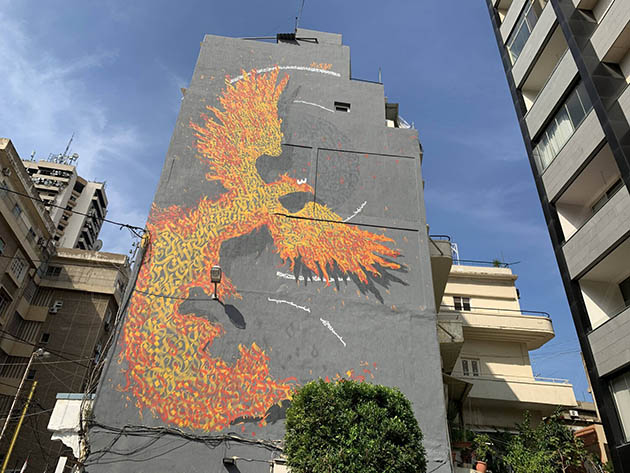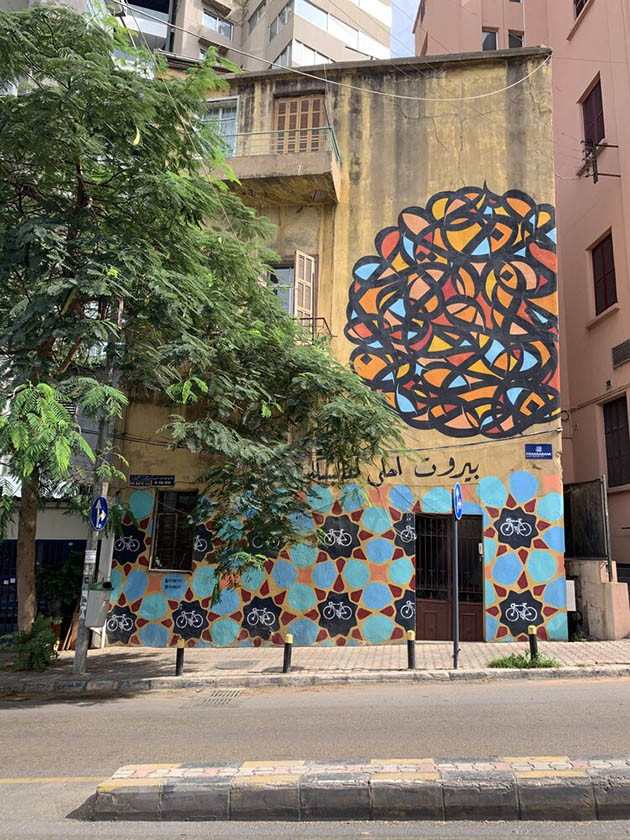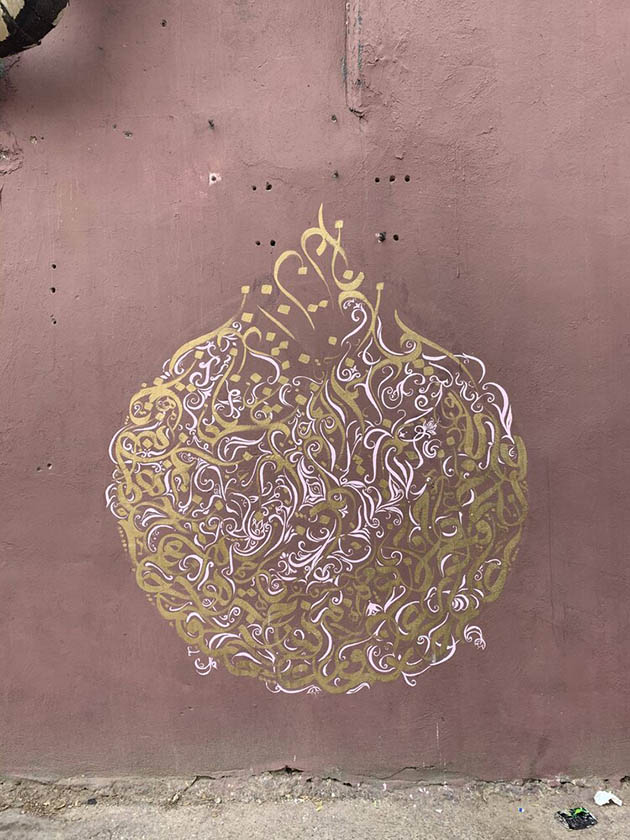Arabic Calligraphy in Street Art
It is no secret that calligraphy is a central element of traditional Islamic art. This ornamental style of writing is one of the most revered aspects of Islamic art and it serves both aesthetic and religious purposes. Calligraphy has not been neglected in the street art scenes in Jordan and Lebanon either.
Throughout my experience with street art in Jordan and the few days I spent exploring Beirut’s street art at the beginning of the October 2019 revolution, I stumbled upon countless murals using Arabic calligraphy. The adoption of calligraphy into the street art scenes of Amman and Beirut reveals the value that artists in the region place on their heritage, despite not always being accepted as artists by their wider community, as I discussed in my previous post about Amman.

The mural above spanned the entire height of this building, depicting a phoenix whose body is made up of Arabic calligraphy. While walking through the streets of Beirut, this piece was impossible to miss. The size and the detail of this calligraphic mural make it stand out in Beirut’s vast art scene. I can’t fathom how much time, difficulty, and dedication this piece must have taken. To me, its massive size and intricacy represent the artist’s commitment to their craft, their community, and their city.
One artist whose mural I found in the streets of Beirut uses Arabic calligraphy in his work as a “tool to build bridges all over the world.” El Seed, a Tunisian French artist, works to find a quote that represents the voice of the community while also highlighting his “key principles of love, respect, and tolerance,” and then he adorns public spaces with his chosen quote using Arabic calligraphy.

El Seed completed the mural above in Beirut in 2017. The piece utilizes the negative space around the calligraphic lettering as color blocks, adding life and color to an already lively city. The quote El Seed chose for this mural is from Ameen Rihani, a Lebanese American activist, author, and intellectual known for his involvement in the pan-Arab nationalist movement in the early 20th century.
An Amman-based artist named Hazem Qaqa created two golden murals using calligraphy in the city’s Jabal al-Weibdeh neighborhood. These murals, which he painted in 2019, can be found just off of Paris Square, where you can find small shops, kids playing soccer in the center of the traffic circle, many cafes and restaurants that all have different things to offer (including what I consider the best Lemon and Mint in Amman, at Aristotle Cafe), and a good amount of street art in the city.

El Qaqa’s art focuses on Arabic calligraphy; his Instagram page demonstrates the skill, precision, and patience he has learned in his craft. Although it is normally found in traditional art, El Qaqa employs calligraphic elements in his work, both in public spaces and in his personal sketch pads. Artists like El Qaqa and El Seed have embraced calligraphic tradition and in doing so have enriched the street art scenes in their communities. These artists never viewed street art as an imported practice.
Street artists around the world share a spirit for public expression, yet they express themselves in incredibly different ways. These varying forms of expression represent the meeting of artistic and communal identities. By using traditional elements in non-traditional ways, El Qaqa, El Seed, and countless others have contributed to the development of unique art scenes that represent pride in their identity while also showing great respect for their community’s artistic heritage.
Source: www.weavenews.org
Man′s beauty is in the beauty of his writing.



